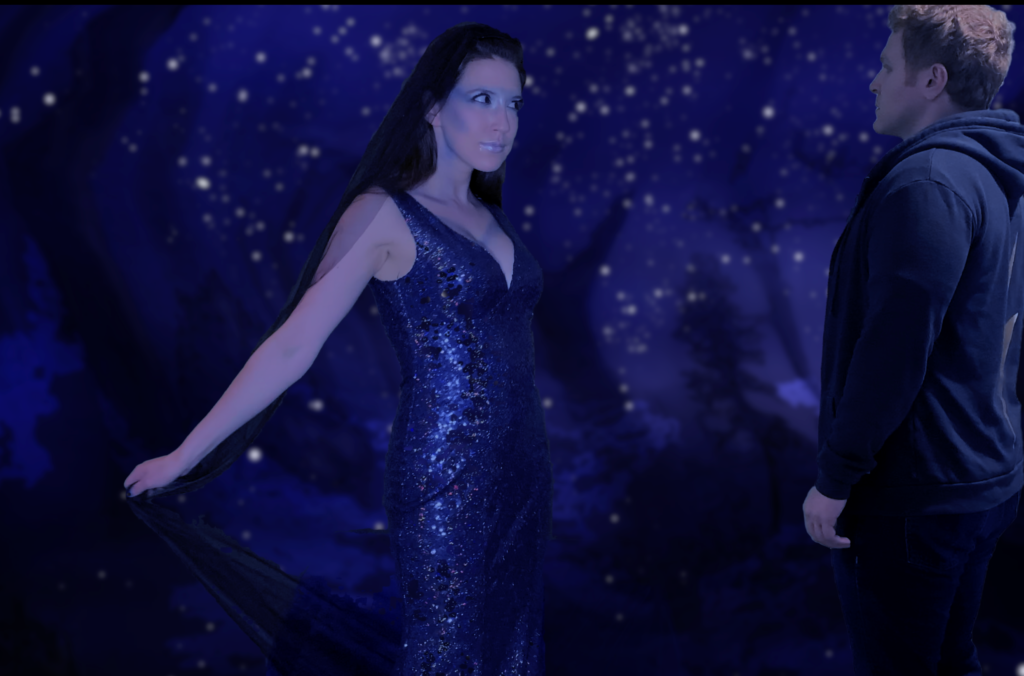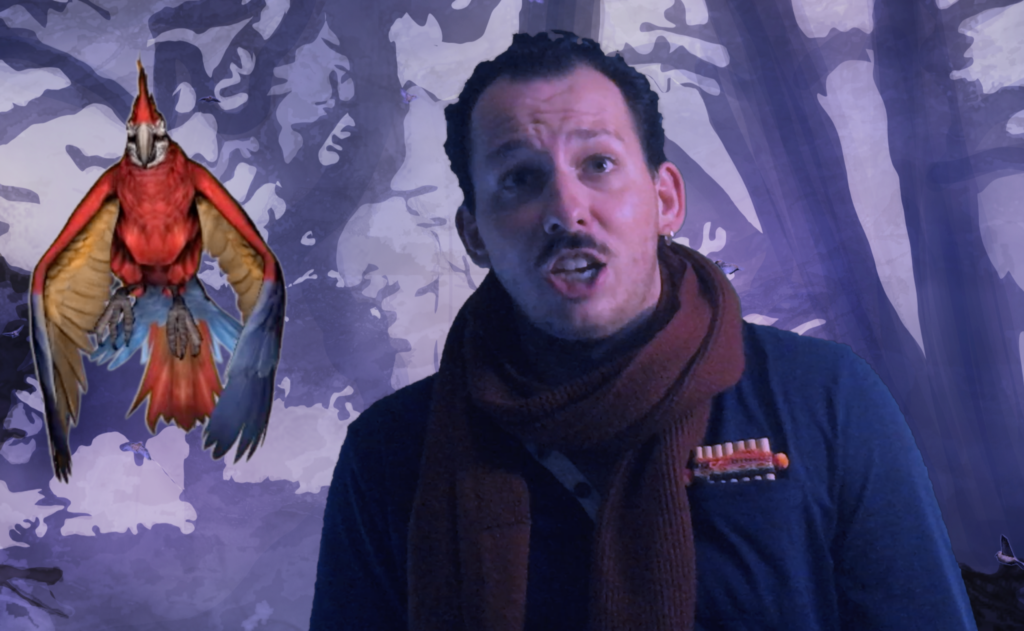Opera NEO’s “Magic Flute” Debuts via Virtual Magic
The moratorium on live performance due to the coronavirus pandemic has left U. S. opera companies in limbo, although some of the companies are presenting solo vocal recitals online by their accomplished resident singers, usually performing from their living rooms. And major companies such as the Metropolitan Opera are rebroadcasting past performances unearthed from their vast archives. But new productions have come to a halt.
In more usual times, San Diego’s Opera NEO would be completing its annual three-opera summer festival this weekend. Earlier this summer, Artistic Director Peter Kozma boldly decided he would mount one of the summer’s scheduled festival operas virtually, Mozart’s beloved The Magic Flute, with the cast he had originally intended to bring to San Diego for his August festival. Each cast and orchestra member would record their parts at home and send them to San Diego for virtual assembly.

Danielle Bavli and Andy Zimmerman [photo courtesy of Opera NEO]
At the production’s opening, the appearance of the vivacious Three Ladies, attendants to the Queen of the Night, set an enviable vocal standard. From First Lady Michele Navarro-Currenti’s bright, soaring soprano volleys to Third Lady Natalie Lewis’ velvet mezzo-soprano sonic cushion, the exuberant vocal trio assured the audience that this German Singspiel would convey the humorous delight Mozart and his clever librettist Emanuel Schickaneder intended. Luke Harnish bounded on the scene as the rustic Papageno, bird-catcher for the Queen, his luxuriant baritone imbuing Mozart’s intentionally simple strophic song with exceptional allure. As a sign of his character’s self-absorption, Harnish spent part of his aria unwrapping and nibbling on a sandwich plucked from his bag.

Luke Harnish and forest bird [photo courtesy of Opera NEO]
If the Queen of the Night’s first act aria is less celebrated than her vocal fireworks extravaganza in the opera’s second act, soprano Danielle Bavli gave “Zum Leiden bin ich auserkoren” its shimmering, lyrical due. I hope, however, she will traverse that later show-stopping aria displaying greater precision in its more demanding fioritura.
Opera NEO’s orchestra sounded better than ever, especially the strings, with tight, clean ensemble work propelling the opera’s familiar overture.
All of the action of this opening scene took place in front of a pleasantly abstract forest night scene, with brightly-colored, slightly cartoonish, birds flying in and out. I say “cartoonish,” because their bright plumage would not be clearly visible at night in the forest. Although none of the singers actually worked together in performance, their careful placement on the screen created a convincing illusion of genuine ensemble interaction.
For the sake of emotional and dramatic continuity, I hope that when Opera NEO releases each additional segment of this opera, they will append it to its previous installment. Especially in opera performance, the emotional credibility of a work depends on the thoughtful building of the work’s dramatic arc. This is what makes opera so satisfying.
In addition to those astounding high notes, of course!
Check the Opera NEO website to acquire access to this first installment of The Magic Flute, as well as for future information concerning the three additional installments of this production.

Ken Herman, a classically trained pianist and organist, has covered music for the San Diego Union, the Los Angeles Times’ San Diego Edition, and for sandiego.com. He has won numerous awards, including first place for Live Performance and Opera Reviews in the 2017, the 2018, and the 2019 Excellence in Journalism Awards competition held by the San Diego Press Club. A Chicago native, he came to San Diego to pursue a graduate degree and stayed.Read more…
